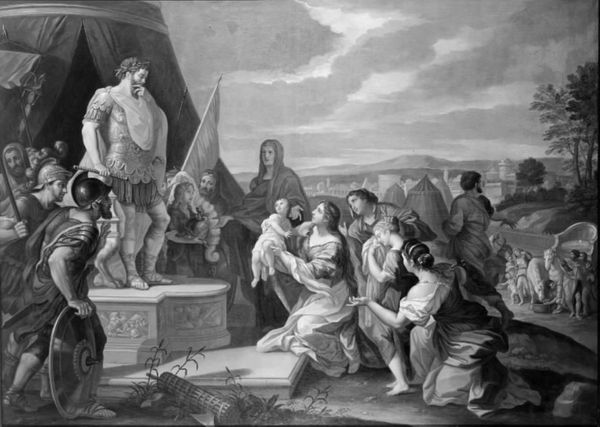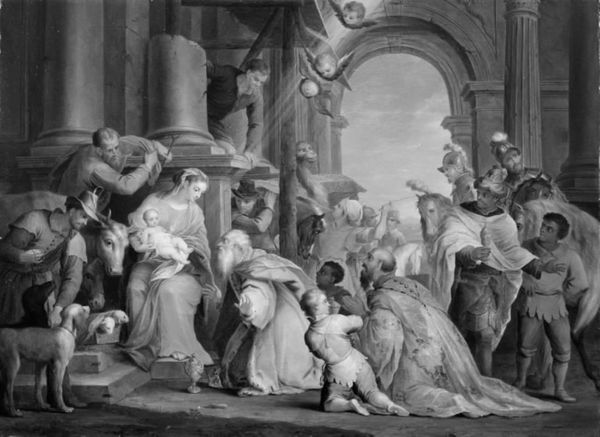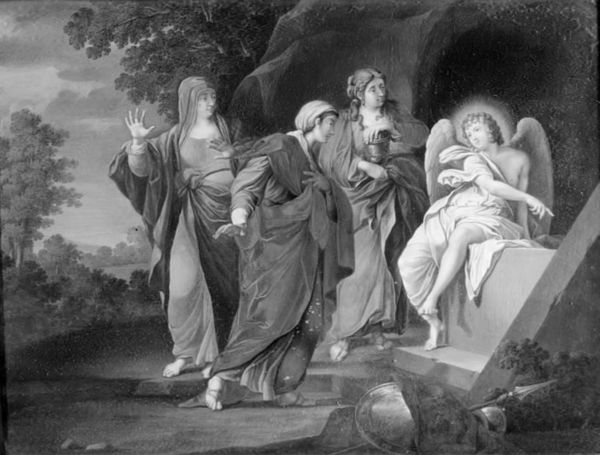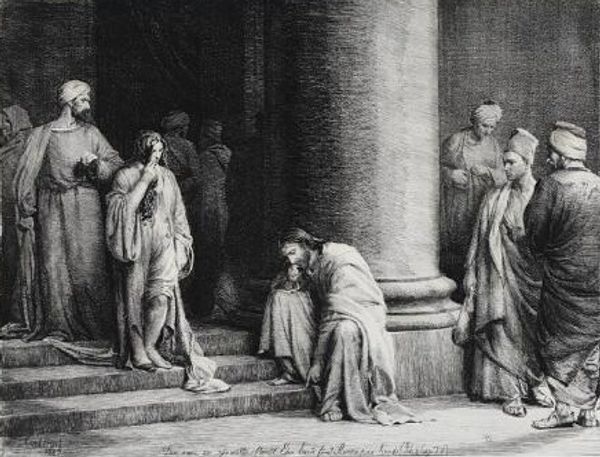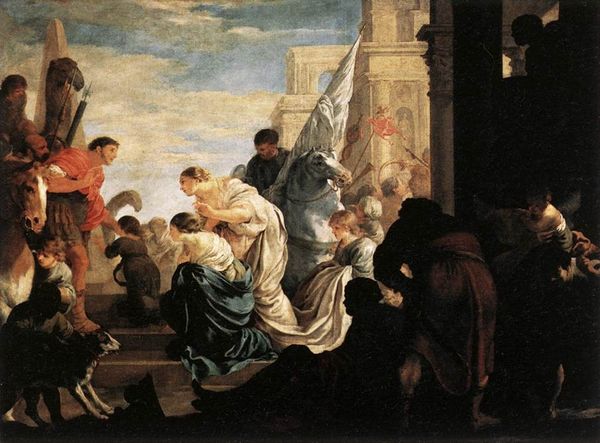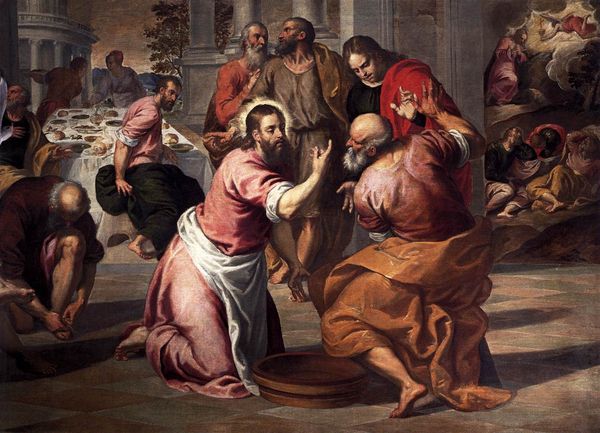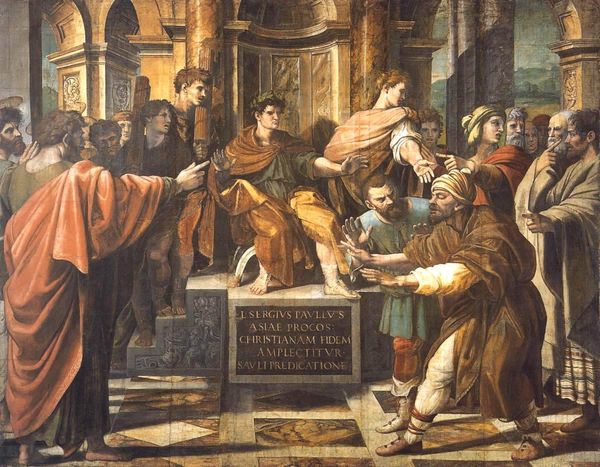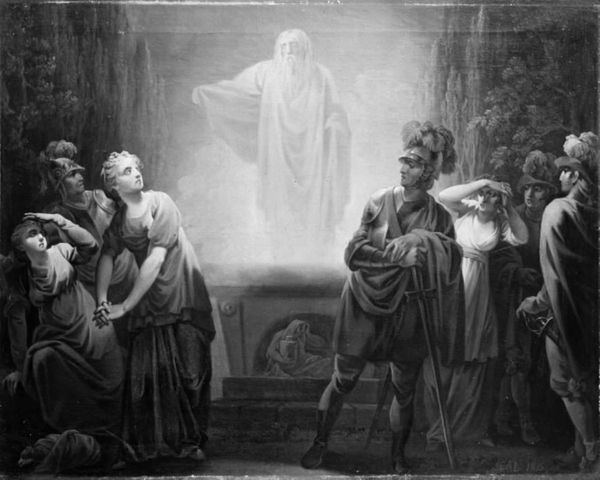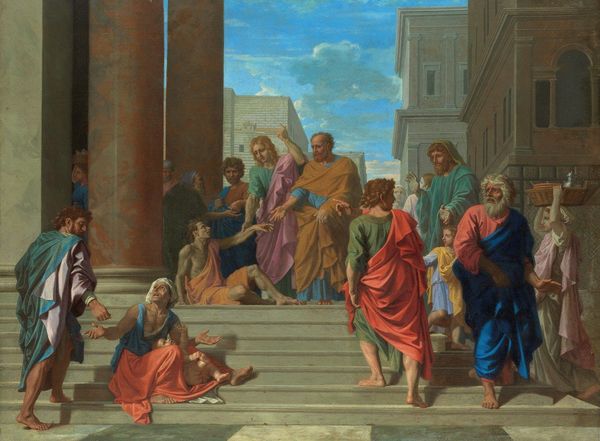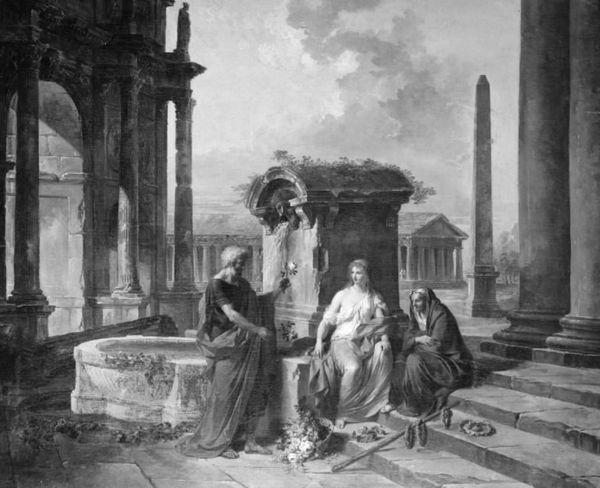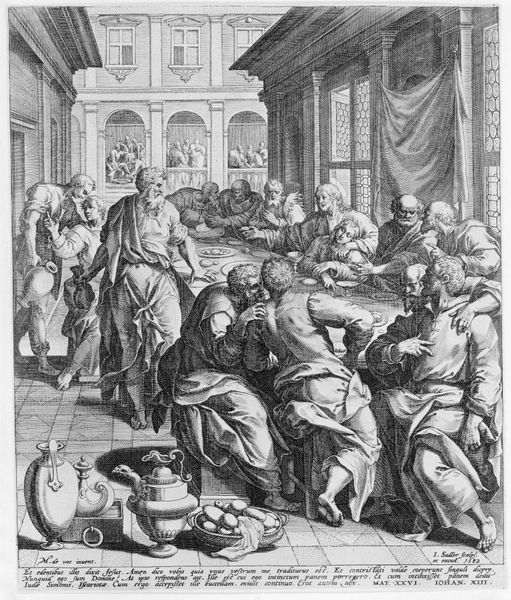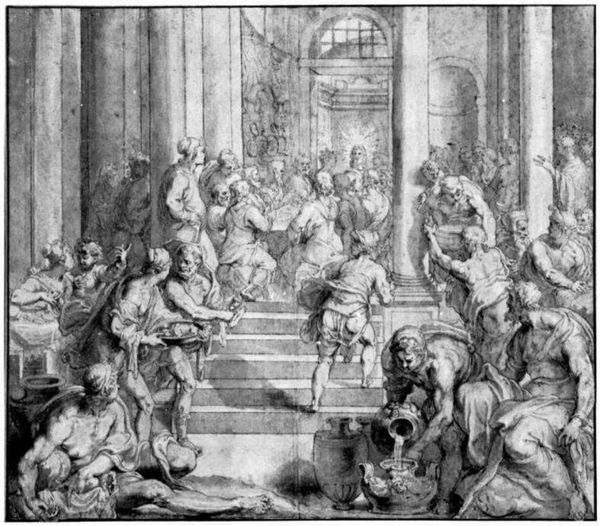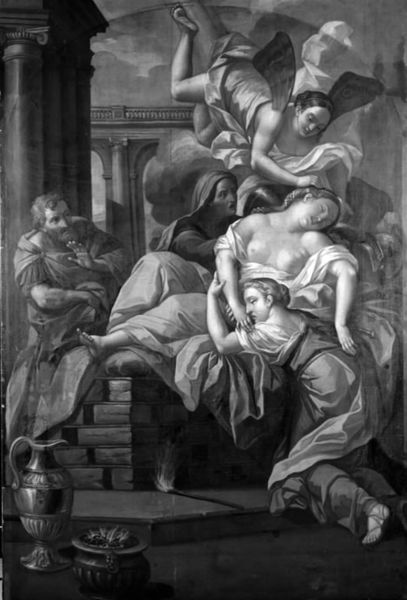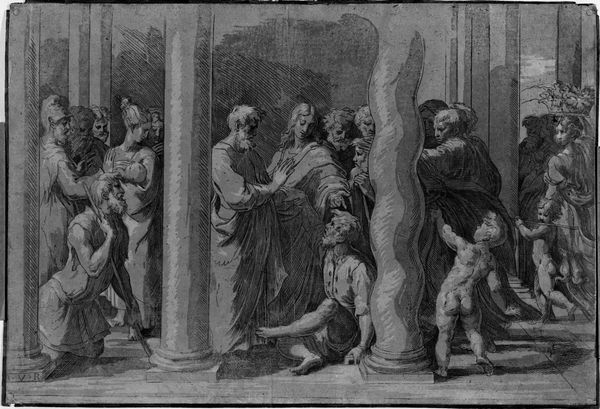
painting, oil-paint, canvas
#
narrative-art
#
baroque
#
painting
#
oil-paint
#
landscape
#
canvas
#
chiaroscuro
#
history-painting
Dimensions: 240 cm (height) x 173.5 cm (width) (Netto)
Editor: Hendrik Krock's 1715 oil on canvas, "The Raising of Lazarus," presents a dramatic scene, all soft grays and blacks. There's a clear division between the mourners clustered around Lazarus and Christ's group. What sort of message was Krock hoping to send to his audience? Curator: Krock was deeply embedded in the Royal Danish court. So, his paintings often reflected the values and the power dynamics of that world. Notice how Christ, illuminated and centrally positioned, seems to command not just Lazarus’ revival but also the attention of the composition. The scene isn't just a biblical event, it’s also a representation of divine authority. Do you notice anything about the architectural background and the people depicted? Editor: I do; the backdrop feels more Roman than from the Bible, and some of the onlookers are wearing contemporary 18th-century clothing. Is that a purposeful statement about the role of the church at the time? Curator: Precisely! It elevates the story of Lazarus to something timeless and continuously relevant to the audience in that era. Placing figures in recognizable contemporary dress implies that they, too, are witnessing – or should be submitting to – Christ's power, which, allegorically, translates to the power of the monarchy and the church. The display is public and so the symbolism plays out on different levels simultaneously: one miraculous, one sociopolitical, and one cultural. Editor: It’s amazing how it all ties back into society. I never considered that the location and clothes could be used that way. Thanks, that really opened my eyes. Curator: Art like this shows that historical context always matters! Examining art helps to illuminate the interplay between power and belief within society.
Comments
No comments
Be the first to comment and join the conversation on the ultimate creative platform.
